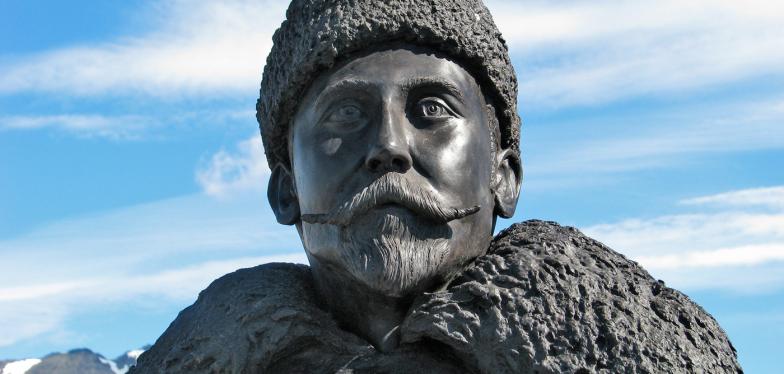Did you know there is a historical connection between Belgium and Antarctica?

Belgium has had a special interest in Antarctica for more than one hundred years. It started with Adrien de Gerlache de Gomery who led the first purely scientific expedition to Antarctica between 1897 and 1899. With his ship the Belgica, he discovered the Gerlache Strait and numerous islands. The expedition was also the first to spend the whole winter in the Antarctic pack ice. Also on board were the Norwegian Roald Amundsen and the American Frederick Cook, who would later be an important figure in the history of the Polar Regions.
Adrien de Gerlache gave a total of 87 names to his geographic discoveries. Family members, famous people and particularly cities and provinces who had provided the most financial backing were consequently immortalised. Thanks to this, the 30,000 tourists who visit the Antarctic Peninsula every year are reminded of Belgium wherever they go. Among other places, visitors sail through Antwerp Island, Brabant Island, Ghent Island, Liege Island, and through Flanders Bay. The expedition also discovered the only insect which can survive the whole year in Antarctica: the Belgica antarctica (Antarctic Midge).
In 1957-1958, Gaston de Gerlache, Adrien's son, led the second Belgian Antarctic expedition in history. In early 1958, the expedition team built the first Belgian scientific research station at 70°25'33" south: the King Baudouin base. Subsequently, two other Belgian expeditions were organised, during which the Belgica and Queen Fabiola mountain ranges were discovered.
In the meantime, on 1 December 1959, Belgium was one of the first twelve countries to sign the Antarctic Treaty. The treaty prohibits military activities or nuclear testing in the Antarctic. Only scientific research is permitted there. Additionally, all territorial claims are put to one side. In the wake of the Antarctic Treaty, a number of other supplementary initiatives have been taken, the most important being the Madrid Protocol (1991). It designates Antarctica as a 'nature reserve, devoted to peace and science'.
From 1964 to 1967, Belgian scientists collaborated with the Netherlands, and with South Africa from 1968 to 1970. After 1970, Belgium had no more interests in Antarctica. However in 1985, Belgian activities were resumed in the Antarctic via the scientific Antarctic programme of the Belgian Science Policy (BELSPO). Since 2009, Belgium has had its own research base in Antarctica once again. The Princess Elisabeth base, which was built on the occasion of the International Polar Year 2007/2008, is powered entirely by sustainable energy.